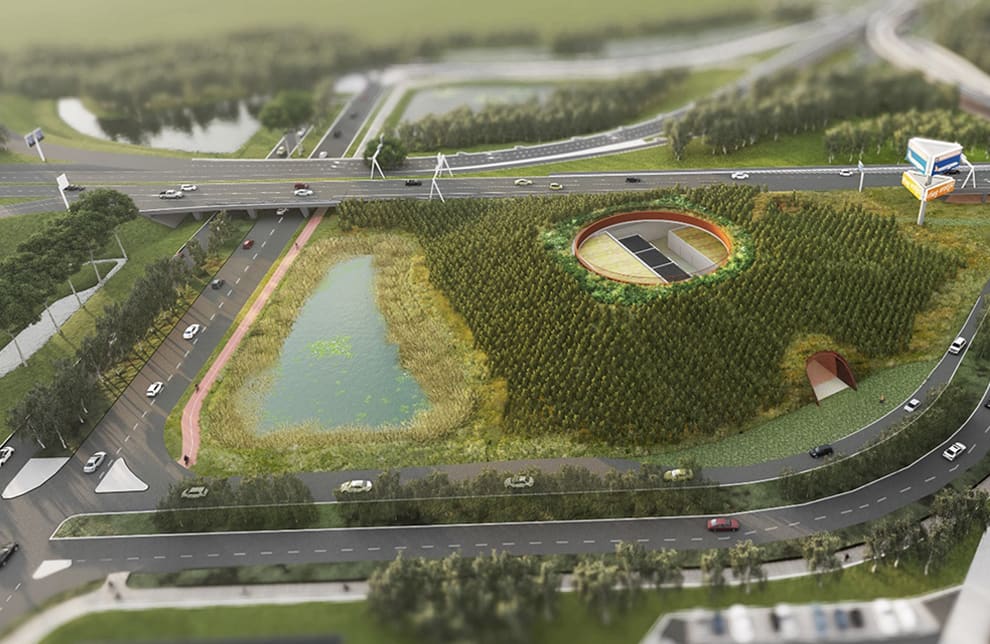The air at Schiphol just got a little bit cleaner: More electric equipment
At Schiphol, more diesel-powered machines have been replaced by electric ones. We’re talking about the generators that provide parked planes with power. Not the most striking piece of equipment, but it is one of the most polluting. Now, almost all stationary aircraft at the gate are powered electrically. A milestone we’re rather proud of.

Fewer diesel generators for planes since 2010
We have been phasing out the use of diesel generators, known as Ground Power Units or GPUs, since 2010. Between 2010 and 2014 we started with the first alternative: installing shore power at several gates. Out of this unit, called the Fixed Power Unit, comes a plug (a lot larger than the ones at home) that is plugged into the plane. This allows the systems on board, such as the lighting and cooling systems, to run on electricity instead of a diesel generator. But not all gates received such a unit right away; the aircraft were still connected to the traditional fuel GPU.
Schiphol developed an electric version
There must be another way, thought a few Schiphol employees. Together with the Danish company ITW, they started developing an electric-powered GPU, the e-GPU, in 2017. An ordinary box on wheels on the outside, special on the inside because of four very powerful batteries. The first came into use at the end of 2021. They were initially used alongside the diesel GPUs. But that has recently become a thing of the past. Around the planes at the gate, all diesel GPUs have been replaced by e-GPUs. What we started in 2010 is now complete: as many parked planes as possible are supplied with electrical power.
No more diesel generators near aircraft
In addition to replacing the GPUs, we have also expanded the number of gates with a Fixed Power Unit. Only part of Pier D is not ready yet, but that will be finished this summer. And Pier C will follow in 2028. As long as these gates do not have shore power, we will continue to use an e-GPU. We do the same at locations where aircraft cannot be parked at a gate, such as the apron where KLM Cityhoppers are stationed.
30% fewer emissions due to electric power supply
Good to know: all our electricity is sustainable. The whole of Schiphol runs on green energy from Dutch wind turbines. And to relieve the electricity grid, we charge the e-GPUs at night. After 3 hours on the charger, they can last a whole day. By electrically powering stationary aircraft, we have reduced emissions on the apron by 30%. This improves air quality and is pleasant for the employees who prepare the aircraft for the next flight. Noise pollution has also been reduced considerably by the e-GPUs.
Tying up loose ends
But we’re not there yet. The e-GPUs are fine for smaller aircraft, like the Cityhoppers, but not for larger, intercontinental aircraft. If they cannot park at a gate, they now have to make do with a diesel GPU. And although this does not happen often and all diesel at Schiphol has now been replaced by the cleaner HVO100 variant, we also want e-GPUs for the larger planes. That is why we are currently developing an e-GPU for larger aircraft together with the supplier. A second pilot has been launched for this.
Schiphol wants to be a zero-emission airport with zero-emission ground handling by 2030. Replacing diesel GPUs with electric GPUs and installing shore power help contribute to this.
Read the previous blogs
-
Special high-voltage substation
Published on:New high-voltage substation contributes to one of Schiphol’s most significant sustainability goals: zero emissions in 2030.

-
Start construction circular checkpoint
Published on:For the new checkpoint we are using material left over after the demolition of three office buildings and three cargo buildings at Schiphol.

-
Highest ACI accreditation for sustainability
Published on:Industry association Airports Council International (ACI) has awarded three of our airports the highest possible level for sustainability.
